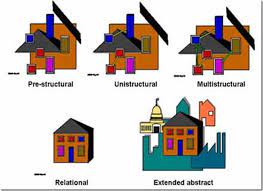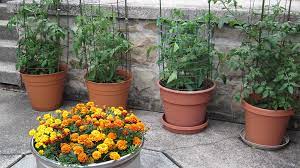STA 225 2.0 Design and Analysis of Experiments
Lecture 1
Dr Thiyanga S. Talagala
2021-10-15
Lecturer-in-charge and Chief Examiner
Dr Thiyanga S. Talagala
PhD in Statistics (2019), Monash University, Australia
BSc (Hons, Special) Statistics, University of Sri Jayewardenepura
Batch first and Professor R A Dayananda Gold Medalist
Research interests
- Data visualization, Computer vision, Time series forecasting, Machine learning and interpretability methods, Statistical computing
Personal website: https://thiyanga.netlify.app/
Course outline
Makeup Quiz
Category A
- An illness that requires the student to miss all of his or her classes for 2 days or more.
Category B
- A period of grief for loss of a family member or friend.
Category C
- A family emergency.
Philosophy driving our makeup exam policy has three goals
Keep things fair.
Encourage good time-management.
Encouragement and appreciation of on time submission students.
A valid documentation of proof is required prior to the assignment deadline.
Help us to help you!

Help us to help you!

Use the LMS forum to ask questions.
Feel free to answer each others questions.
I will also provide answers.
Email ttalagala@sjp.ac.lk only for issues that are personal.
For details on consultation see course website.
Additional resources
R Ladies

R Ladies
R Ladies Colombo
Other
Stack Overflow: question and answer website for professional and enthusiast programmers
Cousera
DataCamp
Udemy etc.
Buckle up - Let's get started.
Why Design and Analysis of Experiments ?
Design
Analysis
Experiments
Example:
A corn field is divided into 4 parts, each part is treated with a different fertilizer to see which produces the most corn.
An experiment is conducted to study the influence of operating temperature and three types of face-plate glass in the light output of an oscilloscope tube.
Research designs
1. Observational Studies
Observe the subjects and measure variables based on what is seen and heard without interfere the subjects or variables in any way.
Reports the association
1. Observational Studies
Observe the subjects and measure variables based on what is seen and heard without interfere the subjects or variables in any way.
Reports the association
2. Exerimental studies
Purposeful changes are made to the input variables of a process or system and then observes what happens in the output response.
The researcher intervenes to change the process
The goal is to determine what effect a particular treatment has on the outcome.
Example: Observational study
Do you favor increasing gas price?
Goal:
Get information on the opinion of the people in Greater Colombo areas.
Research design:
In Greater Colombo areas, the people with registered phone number were called for a telephone survey.
Example: Experimental study.
A nutritionist is interested in comparing the effect of two types of preservatives (A and B) on the lifespan of white flour bread (the time that elapses from the moment the bread is made until the bread raises mold). In order to perform the experiment, the researcher chooses 20 bread flour mixtures and randomly divided them into two groups. One group received preservative A and the other received preservative B. After that the researcher measured the time that elapses from the moment the bread is made until the bread raises mold.
History of Design of Experiments
Ronald Aylmer Fisher, who always published as R. A. Fisher, radically changed the use of statistics in research. He invented the technique called Analysis of Variance and founded the entire modern field called Design of Experiments.

Your Turn
Determine whether each research study is an observational study or experimental study.
Question 1
Depression, anxiety, and stress among Sri Lankan undergraduates in times of Covid-19 lockdown
For the purpose of data collection, an online cross-sectional survey was carried out from May 26 to June 27, 2020, utilizing a Google adapted preformed questionnaire. The form was shared with a short overview and justification through Facebook, Twitter, Facebook messenger, Viber, and What’s App.
02:00
Question 2
Gaming behavior of school children following Covid-19 lockdown.
Goal: Compare gaming habits before and after the pandemic.
Data collection method: Online questionnaire, shared via social media and youth network
02:00
Question 3
Does the color of a basket ball influence the number of goals?
A random group of students is chosen and asked them to do a series of 5 shoots using a regulation normal-coloredbasket ball. The data is recorded. The same group is then given a green colored basketball and the number of shoots is performed. The data is again recorded. A statistical analysis is performed.
02:00
Design of Experiments: Terminologies
Factor
A factor is an independent variable or assignable cause that may affect the responses and of which different levels are included in the experiment.
Also known as explanatory variables, predictor variables, or input variables.
Factor level
- The values that the factor take
Example
An investigation was carried out to determine the effect of two types of fertilizer (A, B) and water-level (20ml, 40ml, 60ml) on the nitrogen content of leaves.
Factors:
Fertilizer type
Water-level
Factor-levels:
Fertilizer type: A, B
Water-level: 20, 40, 60
Treatment
Combinations of factor levels are called treatments.
Fertilizer type: A, B
Water-level: 20, 40, 60
Treatments
A-20, A-40, A-60
B-20, B-40, B-60
Single factor study
A treatment corresponds to a factor level, thus the number of treatments equals the number of different factor levels of that factor
Multi-factor study
A treatment corresponds to a combination of factor levels across different factors, thus the number of all possible treatments is the product of the number of factors levels of different factors.
The goal of an experiment is to detect differences between treatments.
Experimental unit
- The smallest unit of experimental material to which a treatment can be assigned.
Observational unit (Sampling unit)
The smallest unit which the response will be measured on.
This may not be the same as the experimental unit.
The observational unit is smaller than the experimental unit.
Each experimental unit consists of several observational units.
Example

A-20, A-40, A-60 B-20, B-40, B-60
Measure nitrogen content from multiple leaves and use mean nitrogen content to represent the individual plant.
Experimental unit: Pot (Individual plant)
Observation unit: Leaves
Your Turn
What is the experimental unit?
What is the observational unit?
Question 4
20 rats are randomly assigned to each of 4 doses (none, low, medium, high). The rats are kepts in individual cages under the same environmental conditions in the same room. Each rat has its assigned dose stirred into its daily meal for 2 weeks. The weight of each rat is recorded after two weeks.
What is the experimental unit?
What is the observational unit?
04:00
Question 5
20 rats are randomly assigned to 4 cages (5 rats in each). Each cage is then randomly assigned to one dose (non, low, medium, high). The rats are kept in their assigned cages under the same environmental conditions in the same room. Rats are not fed individually; food is placed in each cage in a common plate out of which all rats eat. The weight of each rat is recorded after two weeks.
What is the experimental unit?
What is the observational unit?
04:00
What is Design of Experiments?
"Design of experiments (DOE) is a statistical approach to designing and conducting experiments such that the experiment provides the most efficient and economical methods of determining the effect of a set of independent variables on a response variable."
Source: The Certified Six Sigma Black Belt Handbook by T. M. Kubiak and Donald W. Benbow
General Model for Process or System
General Model for Process or System
An experiment is a test or series of tests in which purposeful changes are made to input variables of a process or system so that we may observe and identify the reason for the change in output response.
We have controlled input factors X’s, output Y and uncontrolled factors Z’s.
Inputs (Factors)
Controllable factors ( X ): measured and determined by scientist
Uncontrollable factors ( Z ): measured but not determined by scientist
Noise factors ( ϵ ): unmeasured, uncontrolled factors, often called experimental variability
Example
An investigatornwants to find the settings that will produce the best surface finish. He can control the feed, speed, and coolant temperature.
Feed: 0.01 and 0.03 inches/ revolution
Speed: 500 and 100 revolutions/ minute
Coolant temperature: 100F, 110F
Other factors that may influence the response
Room temperature (Uncontrollable but observable)
Humidity of the room (Uncontrollable but observable)
Noise factors: Operator's performance
Objectives of experimental studies
To determine which variables are the most influential on the response Y
To determine where to set the influential X's so that Y is almost always near the desired value
To determine where to set the influential X's so that the variablity in Y is small
To determine where to set the influential X's so that the effect of the uncontrollable variables (Z's) are minimized
Source,: Design and Analysis of Experiments, Douglas C. Montgomery
Ingredients of an experimental design
Statement of the problem
Choose a response/output variable
Determine potential sources of variation in response: factors of interest, nuisance factors
Choice of factors, levels and ranges
Choose a set of experimental units
Experimental design: Decide on the experimental procedure and how treatments are to be randomly assigned.
Sample size, number of replications
Other
Timeline
Budget
Technology
Ethics
Design of Experiments: Steps
Gather experimental data
Analyze the results
Interpret and communicate
Experiments
Absolute experiments: determining the absolute value of some characteristics
Example:
Average metal strength
Comparative experiments: compare the effect of two or more factors on some population characteristics.
Example:
comparison of different fertilizers, different drugs, different varieties of a crop etc.
Types and Sources of Errors
Random errors (Experimental error)
Systematic errors
Accuracy vs Precision

Accuracy: closeness of the measurements to a specific value
Precision: closeness of the measurements to each other
Random error
The random variation present in all experimental results.
Different experimental units will give different responses to the same treatment, and it is often true that applying the same treatment over and over again to the same unit will result in different responses in different trials.
Random errors are errors that affect the precision of a measurement
Random error does not refer to conducting the wrong experiment.
Systematic errors
Systematic errors are due to identified causes
Systematic errors are errors that affect the accuracy of a measurement.
Example:
Responses to treatment 1 are measured with instrument A, and responses for treatment 2 are measured with instrument B.
Systematic errors
Systematic errors are due to identified causes
Systematic errors are errors that affect the accuracy of a measurement.
Example:
Responses to treatment 1 are measured with instrument A, and responses for treatment 2 are measured with instrument B.
We don’t know if any observed differences are due to treatment effects or instrument miscalibrations.
Basic principles of experimental design
Replication
Randomization
Blocking
Acknowledgement
Some of the slide content is based on
Montgomery, D. C. (2017). Design and analysis of experiments. John wiley & sons.